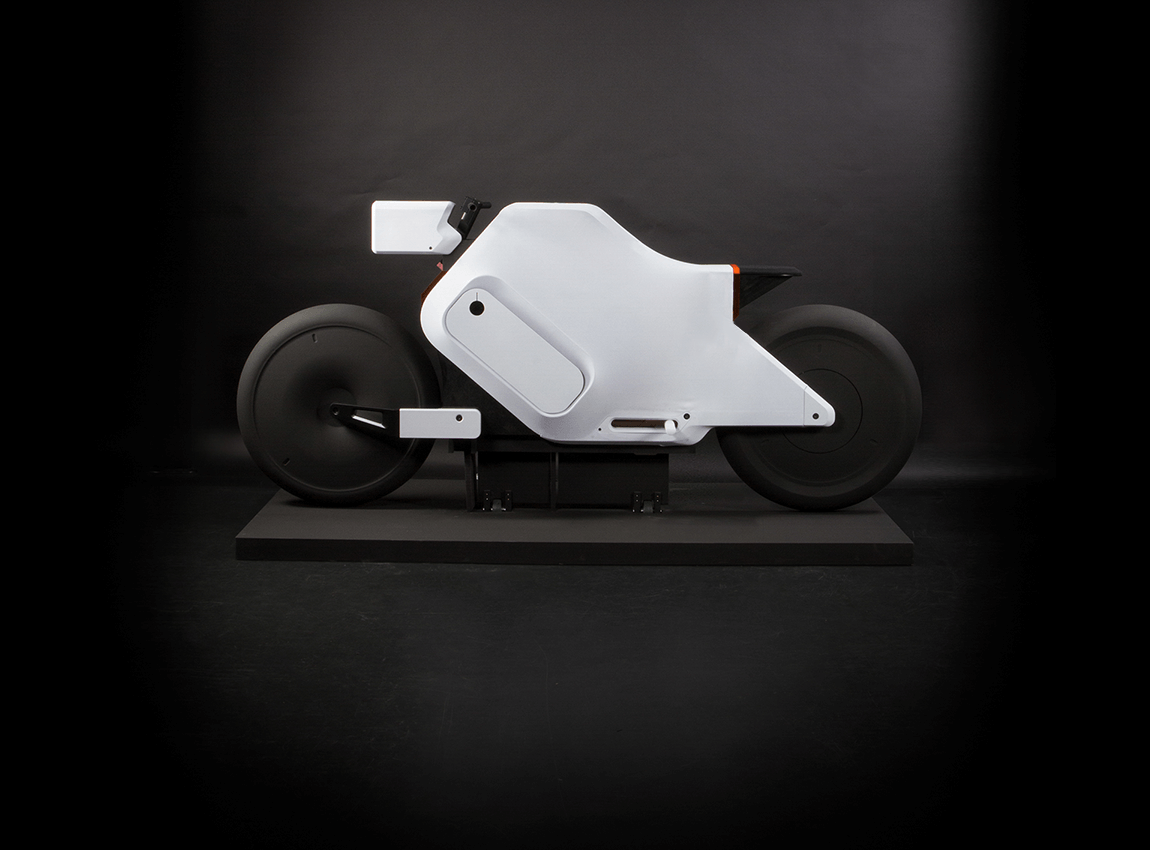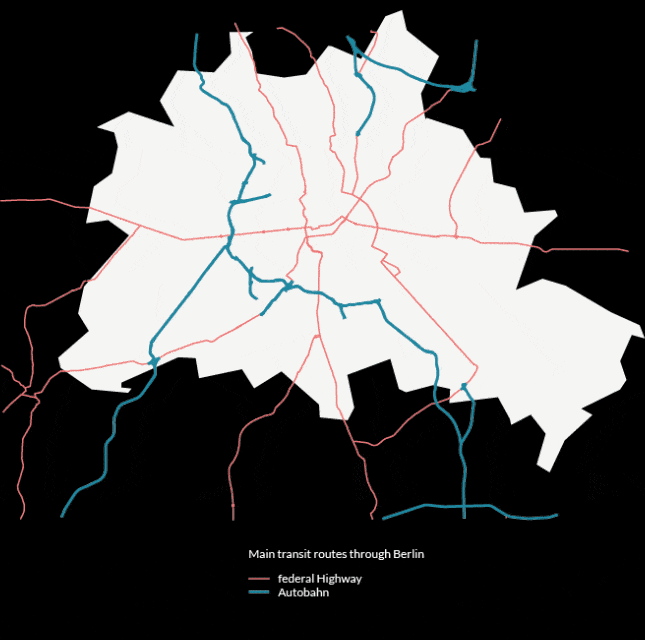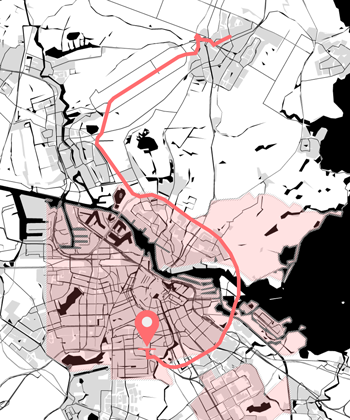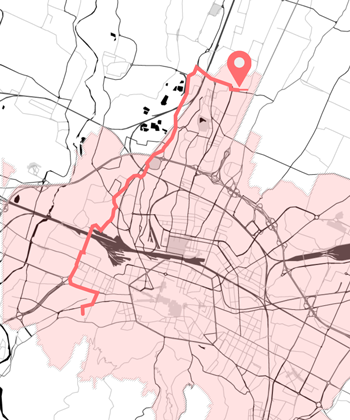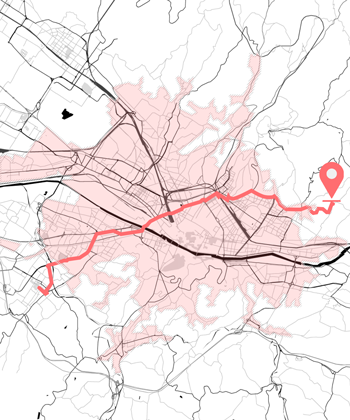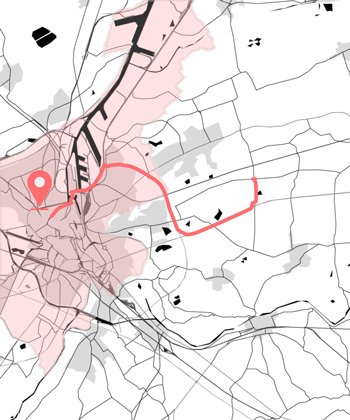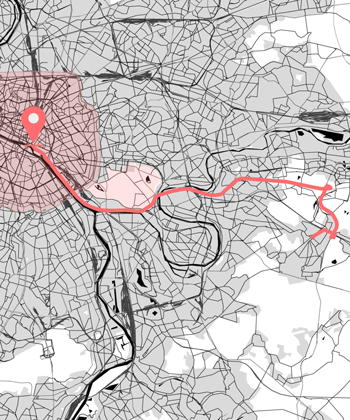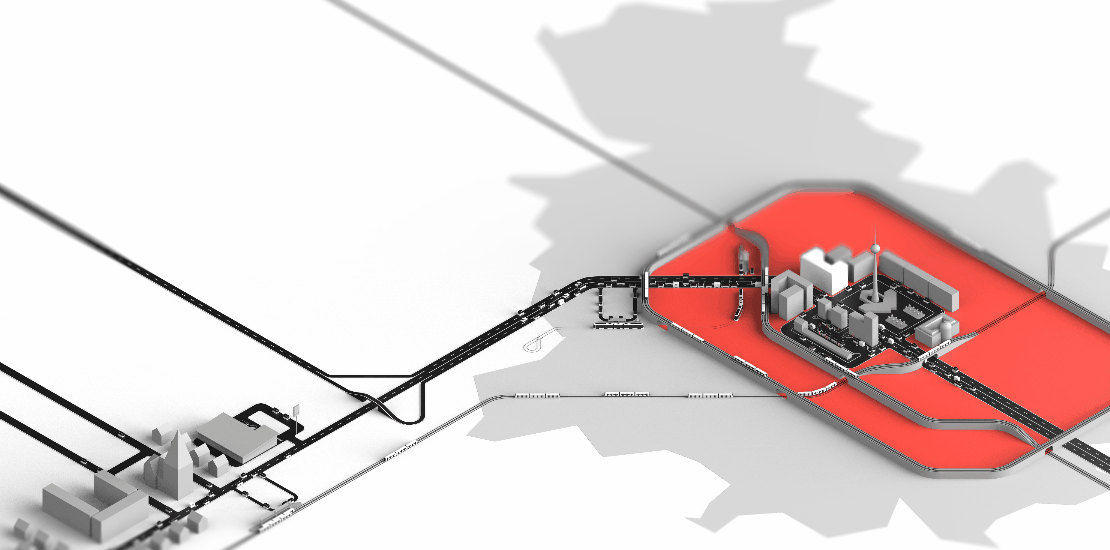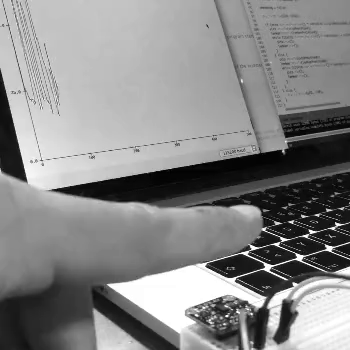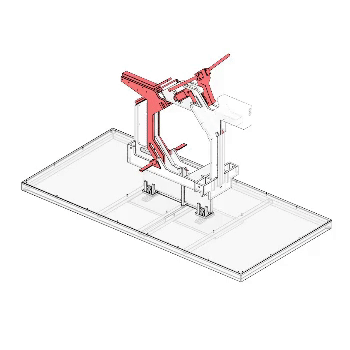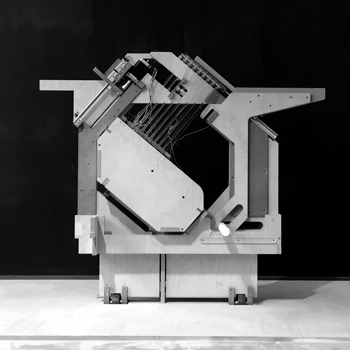Responsive System: Stabilize & React
The battery, a moving counterweight, stabilizes the motorcycle at low speeds and keeps it upright - the rider can concentrate on the surrounding traffic. Any intervention by the system is mirrored to the inside of the rider‘s thighs through tactile feedback. This communication through touch is similar to the interaction between horse and rider.
Evaluative Research
Slow speeds require attention and an advanced technique. Standing upright allows one to move even slower through traffic. The disadvantage: The view is fixed close to the front wheel, and the rider tends to focus permanently on keeping his balance. Hence, supporting the rider during slow speeds increases his situational awareness.
Horse Metaphor
The responsive system is based on the principle of cooperative automation, like human-horse interaction. The motorbike works as a bidirectional system: It automatically stabilizes during slow speeds and informs through discrete analog communication, such as tactile feedback.
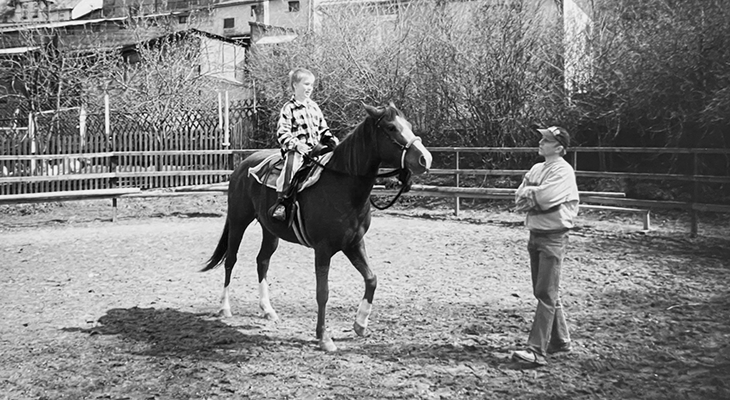
Like horseback riding - this system emphasizes the physical loop between rider and motorbike. Frank O. Flemish's NASA Research Paper and my own experience as a nine year old boy (image above) led to the development of a Prototype to test the haptic feedback loop.
